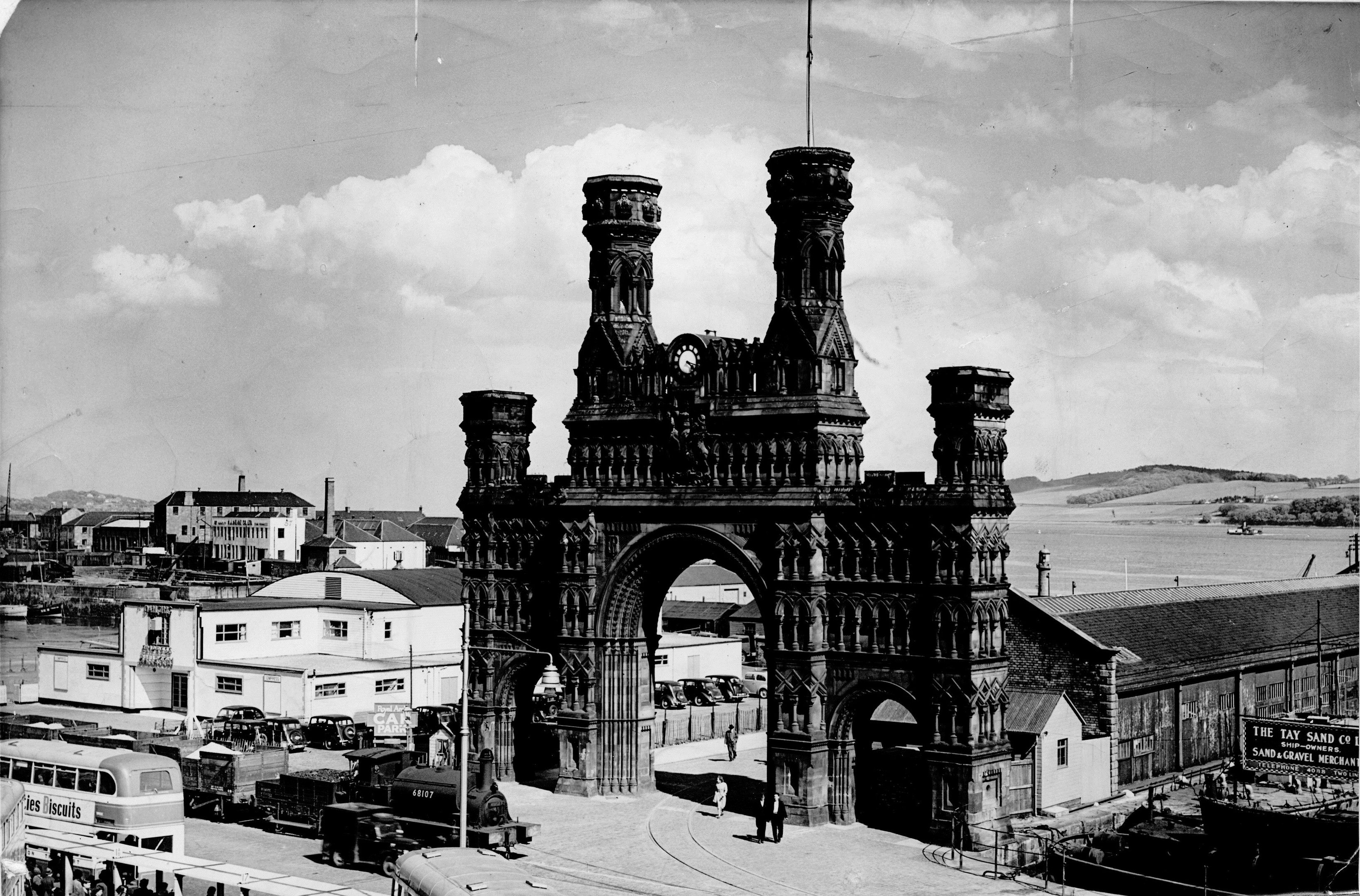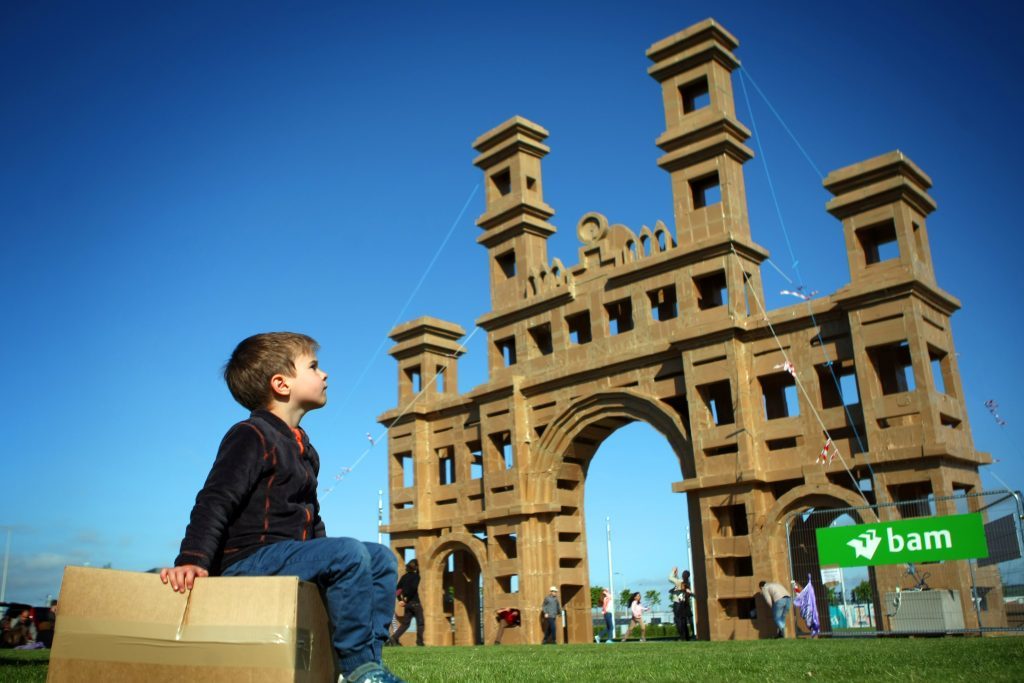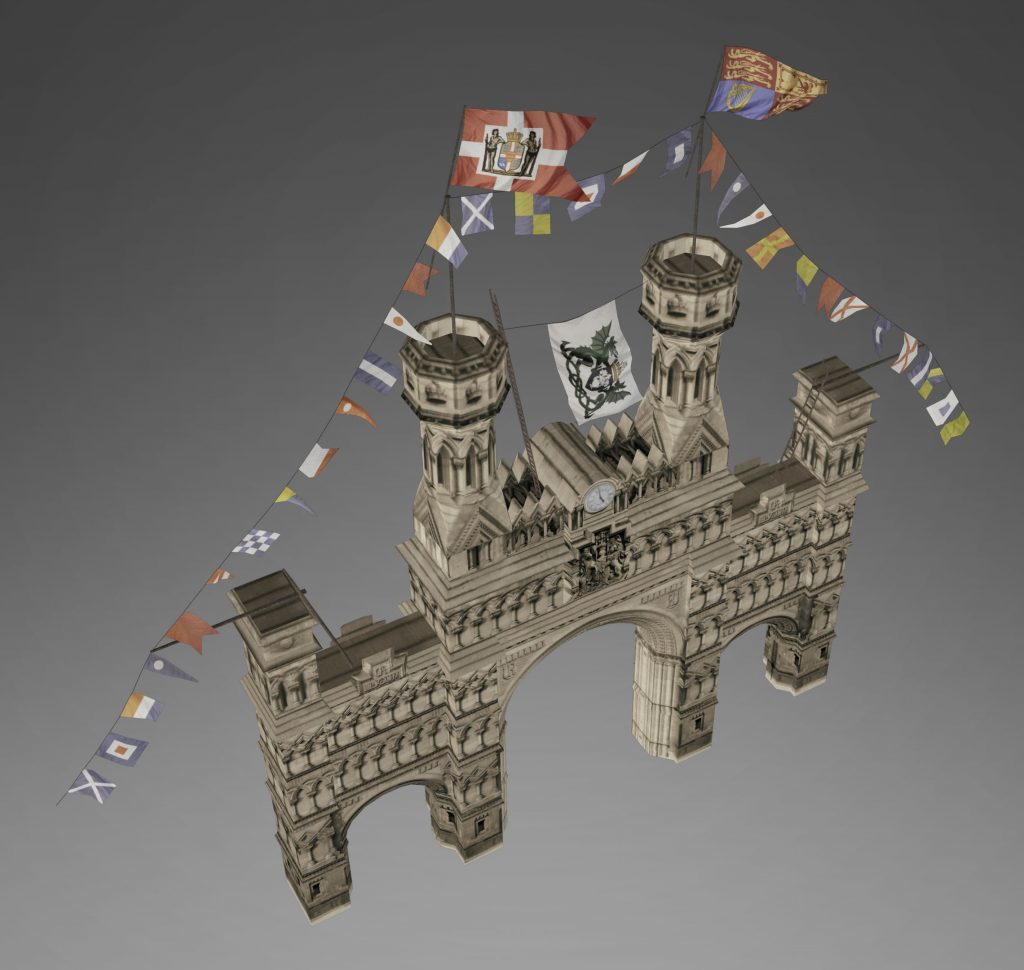It’s a question that many Dundonians have posed over the years – can we rebuild the Royal Arch. Finally, Dr Kieran Baxter has found a way to do just that – via 3D augmented reality.
He is an aerial photographer and digital media practitioner at the 3DVisLab, DJCAD.
“I was the recipient of the 2016 AHRC Research in Film doctoral award,” he explains, “and my work explores the role of artistic enquiry, enabled by technology, in better communicating the stories of our heritage and environment that are written into the landscape.”
He has studied animation at the University of Dundee and has done a PhD in how to use new technology to help people to understand an archaeological site or building.”
Essentially, he says, “I create 3D pictures of things that are no longer there so people can better know the stories behind them.
I work mainly from photographs. I use aerial photographs a lot. For the Royal Arch project we have used more than 30 historical images and used them to create a 3D visualisation, an image that feels like you can touch it!
I had heard of the Royal Arch and how important it was to Dundee many times – I’m not from the city originally, but I came here to study and it was often discussed in archaeological circles. Then in 2016, there was the brilliant cardboard reconstruction of the Arch. It was fascinating to see the public reaction to that and to see how it changed the skyline of Dundee for those few hours, when it stood down on Slessor Gardens.
“The original arch was torn down in the 1960s and people still talk about it being one of the worst decision that planners ever made in the city.
So it was important for me to create something that was a piece of lost architecture in Dundee, that people still connect to and want to remember.
I became interested in bringing back the form of the arch using augmented reality so people can picture what the arch was like, its presence and its gravitas.”
The aim of the project is that people will be able to go down to Slessor Gardens and, in the region of where the Tower once stood, the 3D augmented reality rendering of the Arch, developed by John Anderson at the 3DVisLab, will appear on their mobile phone.
Then you’ll be able to explore the Arch, turning it, zooming in, and examining the nooks and crannies of it.
“There will be a few versions to explore too,” he adds. “The original wooden structure was built in 1844, and was destroyed to make way for the Arch that everybody talks about. Dr Alice Watterson is an archaeologist and digital artist specialising in illustration, digital survey and visualisation. She’s used her specialist skills to recreate this wooden arch, so you’ll be able to travel back in time and see that wooden structure.
Then there’s the Arch that was destroyed in the 1960s – and there are versions of that as well, including the picture with the flags, which was from 1907 when Queen Alexandra visited the city.
There will be a version of the cardboard arch, made by MSc student Verda Munir, for people to explore.
The idea is to show that the Arch isn’t just a piece of static architecture, but to show how it has changed over time.
We don’t have the power or the materials to do a full reconstruction of the Royal Arch itself, but we hope that this version will go someway to helping people feel they can reconnect with this important piece of the history of Dundee.
You can come and hear more about the project and how its developing at a panel discussion on September 23, where both Alice and I will talk through the project, along with other panellists to be announced.
This panel is a collaboration with AND Festival, and the project is supported by Creative Scotland.”
After this, the Royal Arch will be brought back to the city using augmented reality technology for NEoN Digital Arts Festival in November 2017. For more information go to www.northeastofnorth.com.












